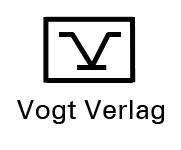Details
| Autor: | Yahya Moshaei-Nezhad |
| Titel: | Thermographic Image Processing in Neurosurgery: Motion Estimation and Correction |
| Typ: | Dissertation |
| Fachgebiet: | Elektrotechnik |
| Auflage: | 1 |
| Sprache: | Englisch |
| Erscheinungsdatum: | Juni 2021 |
| Lieferstatus: | lieferbar |
| Umfang: | 160 Seiten |
| Bindung: | Soft |
| Preis: | 59,00 EUR |
| ISBN: | 9783959470483 |
| Umschlag: | (vorn) |
| Inhaltsverzeichnis: | (pdf) |
Abstrakt in Englisch
It is estimated that in each year thousands of people are diagnosed with dangerous abnormal cellular growth (tumor) in Germany. A brain tumor is one of the most dangerous ones in this category. Medical imaging plays an essential role in tumor diagnosis protocols and is able to detect functional information of the brain. Infrared Thermography (IRT) imaging is one of the imaging technologies among other technologies with different medical applications. IRT imaging is informative not only for disease inspection but also is fast and without radiation response. In neurosurgery, IRT imaging helps the surgeon to observe useful information for brain tumors while the tumor temperature changes over time. In neurosurgery, the patient creates multiple motion artifacts such as head and body movements along with breathing and pulse motion. Additionally, other IRT image artifacts e.g., outliers, occlusion, and noisy pixels can reduce the accuracy and robustness of motion estimation and correction method. These artifacts can disturb the image and make it difficult for the surgeon to diagnostics and analysis images. In this thesis, inspired by optical flow the Combined Local-Global (CLG) method, a new motion estimation and correction method for IRT images in neurosurgery is proposed. A Cellular Nonlinear/Neural Networks (CNNs) method is applied and implemented for image occlusion masking as a preprocessing step. The proposed method has proven a robust, accurate, and better quality performance of IRT images in neurosurgery. The result obtained in this thesis shows that the proposed method can lead to a robust and accurate motion estimation while retaining quality of the original image. The performance of the proposed method is comparable to the conventional method and shows promising results. The performance of the proposed method was evaluated from $12$ data records gained during neurosurgery by using Average Angular Error (AAE), Average End-point Error (AEE), Structural Similarity Index Measure (SSIM), Root Mean Square Error (RMSE), Peak Signal-to-Noise Ratio (PSNR) and Normalized Cross-Correlation (NCC). Additionally, a phantom dataset (blood flow simulation) and a semi-synthetic dataset were generated and used to evaluate the performance, robustness, and accuracy of the proposed method in different situations. Results obtained demonstrate the favorable performance and confidence evaluated by the proposed method.


